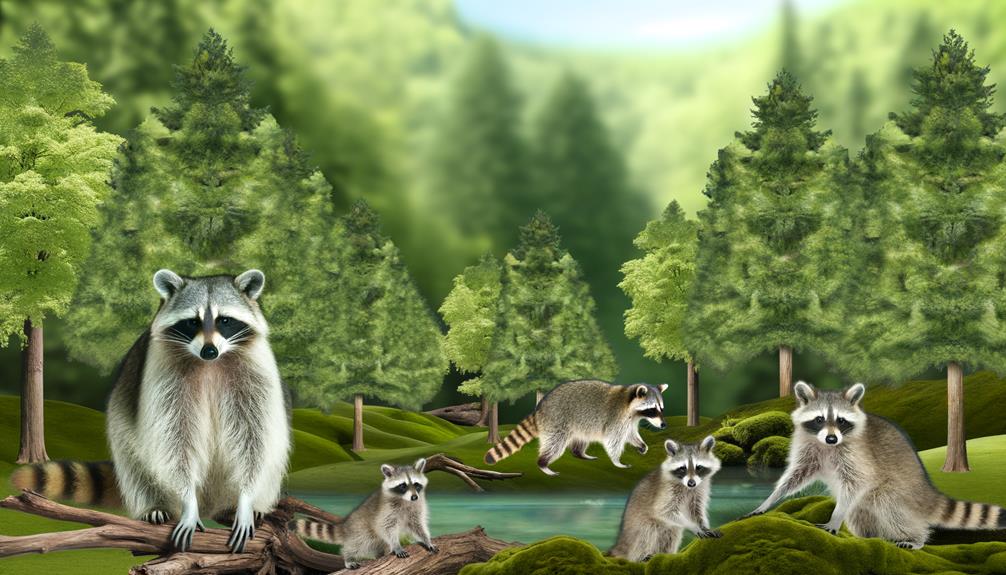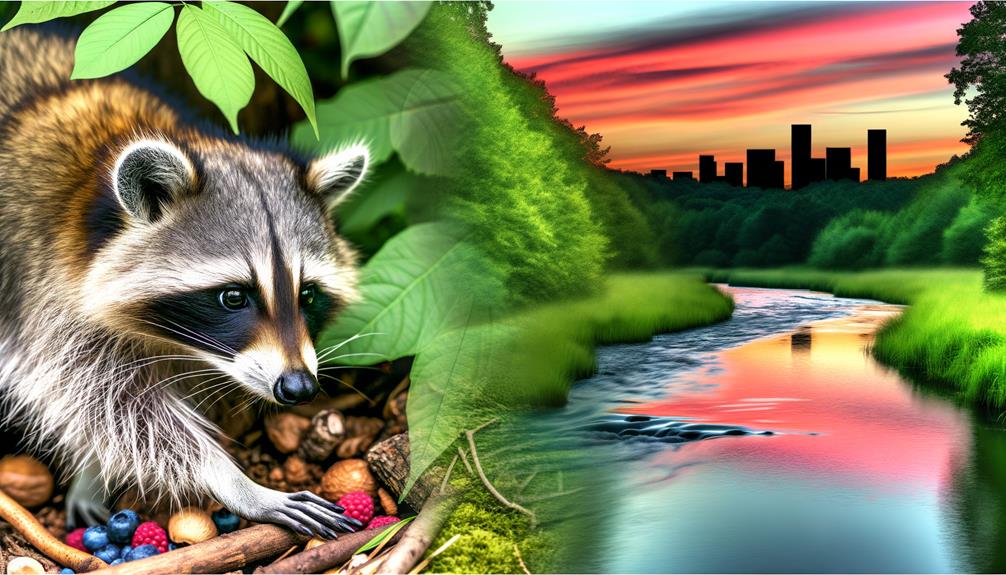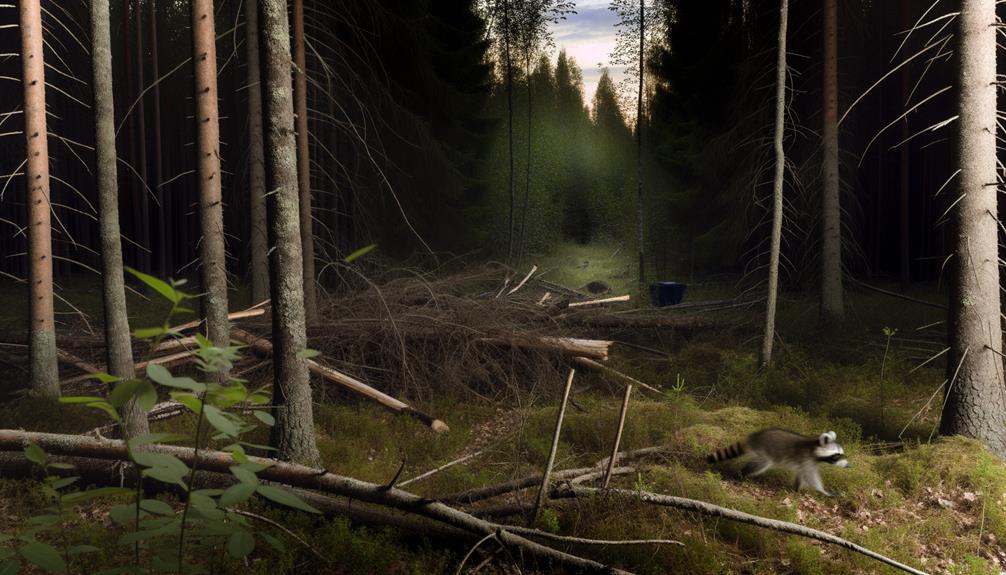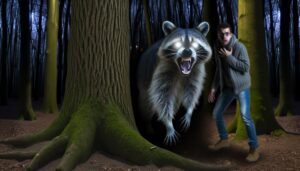Understanding How Long Raccoons Live
Raccoons in the wild typically have a lifespan of 2-3 years, primarily due to predation, disease, and human impacts. Rarely, some may live up to 5 years under favorable conditions.
In contrast, raccoons in captivity can live 15-20 years due to reduced exposure to predators, access to medical care, and a consistent food supply. Factors influencing longevity include genetic predispositions, environmental conditions, and human interactions.
Urbanization, predation by coyotes and owls, along with diseases such as canine distemper and rabies, notably impact their survival. Understanding these variables offers deeper insights into raccoon lifespans.

Key Takeaways
- In the wild, raccoons typically live 2-3 years.
- Raccoons in captivity can live 15-20 years due to reduced threats and better care.
- Predators, disease, and human impacts significantly reduce raccoon lifespan in the wild.
- Access to food and medical care in captivity greatly increases raccoon lifespan.
- Urbanization and habitat loss are major threats to raccoon longevity in the wild.
Average Lifespan of Raccoons

The average lifespan of raccoons in the wild typically ranges from 2 to 3 years, although some individuals may survive up to 5 years under ideal conditions. Mortality factors contributing to this relatively short lifespan include predation, disease, and human-related impacts such as vehicular collisions and habitat destruction.
Predators such as coyotes, bobcats, and large birds of prey greatly influence survival rates. In addition, raccoons are susceptible to various infectious diseases, including canine distemper and rabies, which can lead to substantial population declines.
Moreover, urbanization poses a notable threat, as raccoons often encounter hazardous environments. Data from wildlife studies indicate that while some raccoons may surpass the average lifespan, the majority face numerous challenges that reduce their longevity in natural habitats.
Wild Vs. Captive Raccoons
In contrast to their wild counterparts, raccoons in captivity often experience notably longer lifespans due to reduced exposure to predation, disease, and environmental hazards.
Data indicates that wild raccoons typically live for approximately 2-3 years, with some rare instances extending to 5 years. Conversely, raccoons in controlled environments, such as zoos or rehabilitation centers, can live up to 15-20 years. This significant disparity is attributed to consistent access to food, medical care, and the absence of natural threats.
Studies have shown that the stressors faced in the wild, including food scarcity and human-related dangers, substantially decrease their longevity. This controlled conditions of captivity provide a more stable environment, enhancing their overall lifespan.
Factors Affecting Longevity

Several intrinsic and extrinsic factors critically influence the longevity of raccoons. Intrinsic factors include genetic predispositions and overall health status, which are pivotal in determining the lifespan potential.
Extrinsic factors encompass environmental conditions, predation pressures, and human interactions. Raccoons in urban environments often face higher mortality rates due to vehicular accidents and pest control measures. Conversely, those in rural or protected areas may experience longer lifespans due to reduced human-induced threats.
Seasonal variations also play a role; harsh winters and scarcity of resources can greatly impact survival rates. In addition, social structure and access to shelter can mitigate exposure to adverse conditions, thereby enhancing longevity.
These factors collectively shape the life expectancy of raccoons in diverse habitats.
Diet and Health
Although raccoons are omnivorous and exhibit a highly adaptable diet, their nutritional intake greatly impacts their overall health and longevity. A balanced diet consisting of various food sources can enhance their immune system and reduce susceptibility to diseases.
Key components of a raccoon's diet include:
- Fruits and Vegetables: Essential for providing vitamins and antioxidants.
- Protein Sources: Insects, small mammals, and fish supply necessary proteins and fats.
- Nuts and Seeds: Offer essential fatty acids and minerals.
- Human Food Waste: Often consumed but can lead to nutritional imbalances and health issues.
Studies indicate that raccoons with access to diverse, natural food sources tend to have longer lifespans and better overall health compared to those relying on human waste.
Common Threats

Raccoons face numerous threats in the wild, including predation, disease, habitat loss, and human activities, all of which can impact their lifespan to a large extent. Predators such as coyotes, bobcats, and owls pose considerable risks, particularly to juvenile raccoons. Diseases like canine distemper and rabies also contribute to mortality rates.
Habitat loss due to urbanization and deforestation reduces available shelter and food sources, further endangering raccoon populations. Additionally, human activities, including vehicle collisions and trapping, account for substantial mortality.
According to studies, the average lifespan of wild raccoons is approximately 2-3 years, notably lower than their potential lifespan of up to 20 years in captivity, underscoring the impact of these threats on their survival.
Conclusion
Despite the raccoon's adaptability and resourcefulness, the average lifespan in the wild is only 2-3 years, contrasting with up to 20 years in captivity.
Ironically, human encroachment, which provides raccoons with easy access to food, also exposes them to increased risks such as vehicular accidents and disease.
Factors such as diet, health, and environmental threats play a crucial role in influencing their longevity.
Therefore, the very opportunities that enhance raccoon survival also contribute to their premature demise in the wild.






